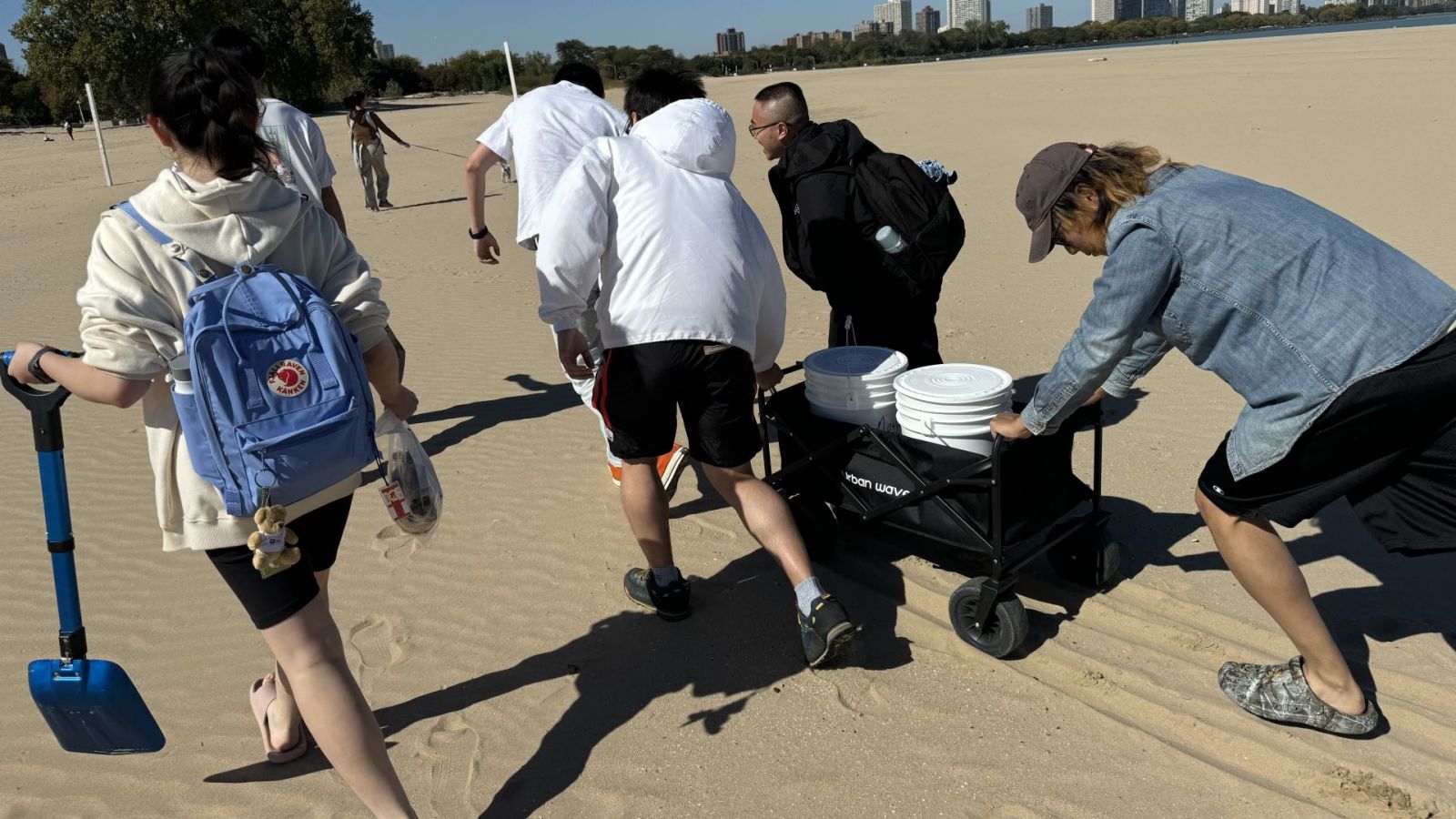
A Purdue Polytechnic research group is exploring sustainable materials for use in cement after collecting sediment from the shores of Lake Michigan.
Concrete is the most used material made by humans with 14 billion cubic meters produced each year for various construction needs, according to the National Ready Mixed Concrete Association. It also carries a weighty cost to the environment. A 2020 EPA report showed cement production accounted for nearly 61% of total emissions from the minerals sector, and since then, multiple organizations have committed to working toward a carbon-free industry by 2050.
Chengcheng Tao, an assistant professor in the School of Construction Management Technology, and her research group are working to provide data on possible solutions. In early October 2024, Tao’s team traveled to Lake Michigan where they collected samples of materials on and near the lakeshore to test at Purdue. Along with Illinois-Indiana Sea Grant (IISG), they hope to determine whether dredged sludge from the lakes can be used as a sand replacement in concrete and discover if any finer particles in the sludge could serve as a filler to enhance the strength of concrete.

“The idea is to reuse, recycle, and upcycle the environmental wastes in infrastructure materials, and reduce carbon footprint for enhanced sustainability,” Tao said. They also hope the dredged sediment will help reduce the use of portland cement, which is one of the most common types of cement.
Doctoral student Xiaoli Xiong is part of Tao’s team. Xiong was selected for the Illinois-Indiana Sea Grant (IISG) Graduate Scholars Program in 2024-2025, which will provide funds to support his research project on using Great Lakes sediment in cementitious composites. He was also selected for a Ross Fellowship from Purdue University for 2024-2025.
“By recycling dredged sludge as aggregates or even as a potential cement replacement, we aim to create a new type of sustainable concrete product,” Xiong said. “We believe the results of this research could greatly benefit Lake Michigan’s ecosystem and its surrounding communities, which is why this study is both important and exciting for us.”
Dredging helps keep channels and harbors safe for navigation. The U.S. Army Corps of Engineers oversees the dredging of around 4 million cubic yards or 400,000 truckloads of sediment each year. The sediment is then managed using a variety of methods, including open water placement, beach nourishment, construction fill, confined disposal, and more. About half of dredged sediment is safe to place back into lakes or on land for beneficial purposes, while the other half needs treatment or safe disposal.
Tao, Xiong, and the team gained approval from the U.S. Army Corps of Engineers and Indiana Department of Environmental Management (IDEM) to take samples along five beaches at Lake Michigan. The team collected one five-gallon bucket from each beach, along with lakewater to conduct a contamination analysis. Tao said they also collaborated with research scientists and coastal geologists in the Prairie Research Institute and University of Illinois at Urbana-Champaign for more sediment samples from the lake.
“The field trip gave us the opportunity to step outside the lab and gave us firsthand experience on the potential impact our study could have on nature,” Tao said. “It allowed us to connect what we are discovering on sustainable infrastructure materials with the environment in the real world.”
Five Polytechnic research projects on sustainable and resilient infrastructure have been funded by the IISG Scholars Program since 2022, including Xiong’s project. Tao’s funded project through IISG Faculty Scholars program researched risks of flooding along southern Lake Michigan and coastal communities. Junyi Duan, a doctoral student in Tao’s group, used artificial intelligence to model fluid-structure interactions and understand how floods can affect infrastructure like bridges. Another doctoral student in Tao’s group, Yizhou Lin, researched the use of Lake Michigan sediment as a component of concrete, similar to Xiong’s project.
“I am truly honored to receive this grant,” Xiong said. “IISG's dedication to strengthening and preserving ecosystems and communities in southern Lake Michigan resonates with my own research focus—reducing the environmental impact of the construction industry.
2024 IISG scholar projects will be funded June 1, 2024, through May 31, 2025.
Additional information
